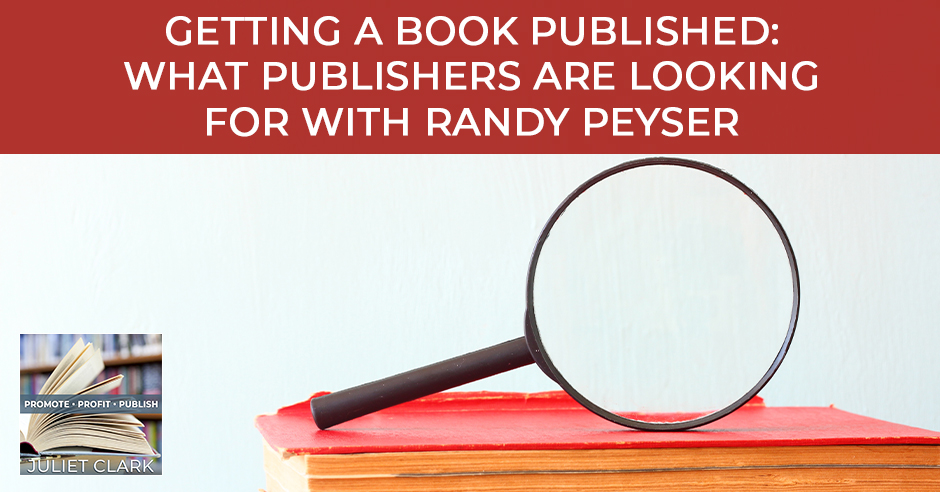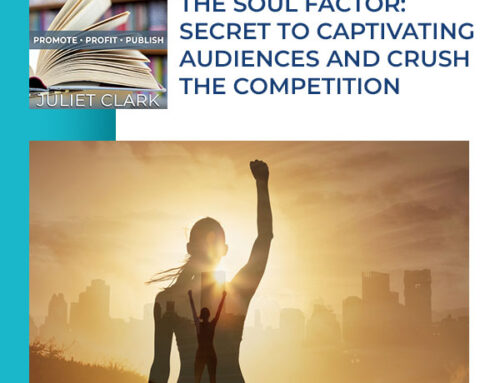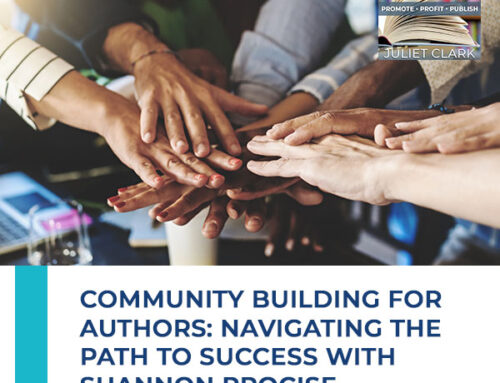
—
Watch the episode here:
Listen to the podcast here:
Getting A Book Published: What Publishers Are Looking For with Randy Peyser
Our guest is a favorite. Her shows are the most listened to and downloaded on our podcast and it’s because she has her thumb, fingers, whatever you want to say on the poles of the traditional publishing industry. Randy Peyser helps people get book deals with literary agents and publishers. She edits and ghostwrites books through her company, AuthorOneStop.com. Her authors had been featured in Time Magazine, Oprah Magazine, the Wall Street Journal and the USA Today’s bestseller lists, in FedEx Offices stores and Office Max nationally, also on the Hallmark channel, Daily Mail TV and in airport bookstores. She is the creator of the Write-A-Book program and the author of The Power of Miracle Thinking and Crappy to Happy, which is featured in the movie, Eat Pray Love. She’s going to share with us what she learned at the Book Expo America in New York because she called me while she was there and said, “Juliet, I have to tell you what publishers are looking for.” Welcome, Randy.
Thank you, Juliet. I’m happy to be here to share the information that I understand. I’d love to start by talking a little bit about what Expo America is. Expo America is what I call the “feeding frenzy” for the publishing industry in the United States. What I mean by feeding frenzy is this is where people go to look at all the actions and get the deals started or happening or signed. People are running around and it’s usually in New York and it’s always in late May. Everybody’s running around looking for the right connection. The agents are looking for publishers and the publishers are looking for distribution and the media channels and the authors are looking for agents and publishers. It’s to show for the trade. You have to be involved in the trade, even be able to book to it.
Most people are running around. It’s a deer in the headlights experience for most people. For me, it’s my playground. I’ve been doing this for many years now. I’m able to set lots and lots of appointments in advance. If you’re a newbie going to this, you don’t have those opportunities. People are trying to make connections where they had 25 appointments in two and a half days. I’m sitting with top agents and top publishers at this show. I’m seeing projects for my clients. I’m also hearing from them, getting feedback from my clients, and also telling me what they’re looking for. I’m able to glean a lot of knowledge and that’s why I’m here is to share knowledge of the exact feedback I’m getting from agents and publishers.
I was excited when you called me too because when you send me people and we have mutual clients we’re working with, our goal is to always build their list for their business. From what you’re telling me, it’s more than for their business.
In the publishing world, it’s largely a numbers game. People always ask me, what are the numbers that publishers are looking for and where do they want them to come from? I was very surprised. I had a meeting with the VP. The woman’s title is VP Publisher in New York, Hay House. Every mind-body-spirit who comes to me, usually most people are going to say, “Can you get me Hay House?” I’m going to tell you exactly what Hay House wants if you’re a mind-body-spirit publisher. This is new information. This is something I hadn’t heard before. I’ve always heard even an agent a few years ago told me, “Randy, it all comes down to publishers sitting with their calculators.” If they love your content, they’re comparing one person’s numbers to another. The person with the highest numbers wins.
What I heard from Hay House is that not only are they looking at all the numbers, meaning numbers of followers that you have in all different forms of social media, but they’re also looking for the size of your email list, the click-through rate, the open rate. That was completely new information to me. In my many years, I had never heard of publishers say that this is important information to know if you’re a mind-body-spirit, author. Not only mind-body-spirit authors because other publishers, if one is looking for it, there are others who are going to be looking for it as well. The reasoning that they gave behind this is that a person can have followers on all forms of social media. They’re all controlled by algorithms. The only form of connection that you have with your audience that you have full control over is your email list. To hear that not only email list but click-through rate and open rate is important information for you to know.
I’ll expand on that a little bit for those of you who may not understand what Randy’s talking about. What she’s talking about is conversion. It’s great if you have followers on LinkedIn, Facebook and places like that but is there engagement? What she’s talking about with the social media and not having control over that is you can have a big a business page, you can have engagement, you can have a big group, but you’re always one algorithm away from losing your audience on social media. Randy, you experienced this a few years ago. I remember you talking to me about it. I think several years ago they changed the algorithm and you had a rocking business page that suddenly the engagement visibility went down. Randy is a perfect example to speak to about losing your audience in a day. What are they talking about the email list? The email list is yours. It’s on its own server. You control it. Here’s the thing, your goal on social media is to get everybody off of social media and into that list. If that algorithm change happens, you still own your audience. That’s why these email lists are so important, as well as the click-through rate because you don’t want people sitting there. You want them engaged there. That’s what those publishers are looking for.
I was sitting with Angelina Jolie’s literary agent. I was pitching a project to him and in the middle of my verbal pitching, I saw him reach into his pocket and he pulls out his phone. My first thought is, “That’s a little rude. I’m pitching you.” What he was doing was he was looking at my clients on YouTube and he said, “These numbers are way too small.” Publishers will look you up online. They want to see the size of your presence online. They will look at your engagement. For example, there’s a publisher whose name is Andrews McMeel. Most people have no idea who that publisher is. You would recognize what they publish: Garfield, Bloomsbury, Calvin and Hobbes. They’re a big publisher, not only of cartoon materials. They told me that they’re looking at the amount of engagement a person has on their Facebook page and their social media. They want to see that there’s real interaction going that’s not just a collection of numbers.
The only form of connection that you have with your audience that you have full control over is your email list. Share on XHow do you get that engagement? Very simply ask more questions than statements. That’s a way to get responses. They’re looking at those numbers. People always ask me, “What my numbers need to be?” Every publisher has a publishing cycle. Maybe some are going to publish four times a year, twice a year or once a year, depending on the size of the publisher. Let’s say they’re a large publisher and they’re considering 50 books for that particular quarter. All things considered, they love the content in each of these books, it all comes down to the numbers game. Think from their perspective, not from your perspective.
The only thing that they care about is, “Which of these books is going to make us the most money?” That’s their bottom line. I want to give you another idea about numbers. Some years ago, the publisher Wiley came back on a book proposal that I have submitted to them and they said, “Where has the author spoken in the last year? What was the size of the audience? Where is the author speaking in the next six to twelve months? What is the projected size of each audience?” These numbers matter. The big question people ask me is, “What do my numbers need to be?” The only response I can give you is they need to be higher than somebody else’s numbers that they’re considering. Is that 20,000 people? I have somebody who has 500,000 views on her podcast. There’s no equality in this game. There’s no set number.
One of my friends who consistently makes the USA Today’s bestseller list, every time she has, she sold over 7,500 books. To do that, she has a genius platform-building tool that she does with her list. She has about 25,000 people on her list and anybody who doesn’t open within 30 days is deleted. She has a constant flow of people that are opening to be able to show those publishers as well as a genius way to get those people that aren’t. That engagement rate looks very high. She’s a romance novelist. I’m sure that varies from category to category. That’s the minimum. USA Today is not a low bar. It’s a great achievement but if you want to go to the New York Times, it’s got to be much bigger than that. People don’t realize the scope of the numbers that have to occur there.
It also depends on the size of the publisher as well. There are also wonderful medium-sized publishers or even smaller publishers who can do a lot for a book and helped it get out there. Their requirements could be lower than one of the major houses.
I’m glad you shared that because I get so much pushback that lists are hard to build. They can be difficult to build when you don’t have the right tools.
One of the things that I do for the people who are working with me is I created a letter that I send to all of my clients and sent out to everyone they know. It’s a simple letter but it’s asking for all of their what we call the big mouth friends, everybody who has a large list or even if they have small lists, we send out an announcement asking them if they were willing to support you in your book launch. If they’re willing, would they please give you the size of the list that they can legitimately reach or they’re willing to reach. I did this for my own book, Crappy to Happy, years ago. I sold it to a publisher. It went through five years of a print run and then the rights reverted back to me. I never did anything more with it.
I’m sitting in a movie theater, the opening night of Eat Pray Love. There’s Julia Roberts holding up my Crappy to Happy book in a bookstore scene. It’s before she goes on a big trip. She pulls it out of the bookshelf and she buys it. I was like, “I’ve got to get my book back into print.” One of the things to get a book into print with a publisher is to write a book proposal. I had one for my original book. It’s like a business plan, which we’re proving to sell the book. I knew I needed higher numbers at this point because I’d already sold for five years. I asked people if they’d be willing to support me in my book launch and if they were, will they please tell me the size of their list?
I had around 2,300 people on my personal email list when I sent that out. I sent it out to those 2,300 people. In my mind, I’m thinking if I can maybe get or reach 30,000 people, that would be good. As people came in, I wrote down their name and the size of the list: name list, name, size. It came to 1,370,000 people. I was blown away. I offer this letter to all of my clients because it’s going to help them. In the proposal, there’s a section called about promotions and we have to prove the sale of your book from the standpoint of what you’re already doing, not the pie in the sky of what you’re going to do once a book was out. They want to see the engagement you have now. That’s why it’s critical to work with you, Juliet.

Getting A Book Published: One of the things to get a book into print with a publisher is to write a book proposal.
What I hear you saying though is pretty cool. I could go out to ten of my friends with big lists and the publisher would take a look at their lists and the value of those as well.
They’re not going to look at their list. What we’re just reporting is the size, the number. We have under the promotion section a little sub-header called Launch Campaign Partners. All of your friends, your associates, your colleagues, your peers, they’re your Launch Campaign Partners. We write down the name and the size of the list and we total it above there. What I’m always looking to do is to tip the sale in your favor. How can I do that? We need to create as much leverage as we can. You absolutely must have your own numbers. On top of that, the more we can show in terms of your leverage with the list of all those people, the higher we can get the advance. We like that.
That’s up to a good point though. Publishers are still giving advances.
One of my authors, it was for a book my company ghostwrote, receives a very nice six-figure advance. She had the numbers to prove it.
One of the things that people ask me about all the time are the foreign rights and I know you work a little bit with Jill Lublin on that. How does that all work? The reason they come to me and ask me about it is because they get those bogus, scammy emails. How does that work? How do you know what’s legit and what’s not?
I trust someone like Jill Lublin who is a very dear friend of mine and colleague of both of ours. We’ve worked together for many years. She goes to the Frankfurt Fair, which is the largest one in the world and the London Fair, the second one. The three biggies in the world are Book Expo America in the United States, Frankfurt Fair and the London Book Fair. I don’t do foreign rights. Jill Lublin is a person who can expand upon that. The one in Germany is eight giant buildings. It’s unbelievable. You have to take a shuttle bus to go between the buildings. It’s huge. Jill will take screenshots of a fluorescent agent list like a big screen and she’ll send it to me and she’ll say, “Randy, who should I go after?”
I’ll do the leg work here and I’ll look up some of those agents if I don’t know them. Some I will know and I’ll say, “After this one, this one, this one,” based on who she’s pitching and what the genres are. If the book comes out through a traditional publisher, there’s a section in the contract called subsidiary rights. Under the subsidiary rights are foreign rights. Usually, publishers and often agents as well will have sub-agents, somebody who’s working for them specifically on foreign rights. If you’re going with an agent or publisher, they would cover that and they would be legitimate. Jill Lublin would be legitimate. The thing with foreign rights, this is usually the scenario. The most money is made in the advance. Most advances can be very nice with foreign publishers because after that, there’s no way to audit the books of foreign publishers and to know if they’re getting legitimate royalties or not. That’s why it’s important to be working with somebody who understands this world.
The reason that I know about working with you with foreign rights is a couple of my self-published clients were able to work with Jill in the foreign rights area. It’s not limited to the traditional. If you meet certain criteria with her on your self-published books, she can sell that as well. That’s my understanding.
Women are coming into their power in a much greater, visible, and very media environment-friendly way. Share on XThat’s a good point because she represents self-published books. Once a book is with a publisher, they have a foreign rights division. There’s a conflict of interest if somebody else out there is pitching a book. That happened to Jill in her own life, where she pitches for foreign rights and she has a publisher in Dubai who wants the publisher but her own publisher isn’t pursuing it. It all had to be negotiated. It worked out.
One of the reasons I love having you on here is after you go to one of these shows, you know what’s in and out. What do they look like?
Every single year, I’ve been doing this for many years, there are buzzwords on the show floor. I don’t even know where it comes from. Does it spread through osmosis from agent to agent and publisher to publisher? For example, a few years ago, I remember the big buzzword on the show floor was, “We’re looking for female-centric business books.” This is books for women and I’m hearing it, “Female-centric business book.” The next year at the Book Expo I show up with a female-centric business book that has the right numbers and I know this is a winner and it turns out it’s not, because the publishers found out that Barnes & Noble couldn’t sell those books. They’re not selling well. Barnes & Noble said, “We don’t want the female-centric business books. We want books that appeal to a wider general audience.”
Now the tides have shifted again because you’re seeing more and more women. I see more to the top. There are more information and more discussion around gender equality and pay and all this stuff. Women are coming into their power in a much greater way, visible way and very media environment-friendly way. That was the buzzword some years ago. The buzz word now and it’s interesting because I heard this in 2018 and I heard it in 2019. I want to mention it, talk about it and expand upon it. I’m going to give you the exact wording that I’m hearing from publisher to publisher. We’re talking about nonfiction.
If you’re a business author, a mind-body-spirit author, a life coach, a coach of anything or memoir, what they are looking for are outcome-driven content. I was on a Zoom call with one of my clients and the acquisitions editor from McGraw Hill, a major business publisher. Acquisitions editors are the ones who acquire manuscripts. I’ve sold other books to McGraw Hill. She’s interested in this one title. She said we’re looking for outcome-driven titles at eight-reader through practical steps from point a through point B. Not so much of picture books like the broad picture of whatever their philosophy is. They want action steps that people can take. When they pick up that book and by the time they finished reading it, if they’ve applied those steps, they’ve learned something new and they’re applying it. Let’s give some examples of an outcome-driven title, Crappy to Happy, my book. You’re going from crappy to happy. That’s an outcome-driven title.
A couple of years ago when I was pitching a project, this one publisher acquisitions editor at the Book Expo said to me, “For example, acupuncture for anxiety. The feature is acupuncture and the end result is it’s going to clear the anxiety.” Sometimes people have nifty titles but they’re not outcome-driven. The person doesn’t have that need. Why do people buy books? If somebody walks into a store or they’re looking online or wherever and there are millions and millions of choices, what’s the exact person with the exact needs that was going to say, “I need this book.” That’s your buyer. The exact person. I tell people like, “If you go to an actual bookstore, what shelf would you sit on?” Find the exact shelf. If you can’t find the exact shelf, there’s a problem. If you can’t find it, neither can Barnes & Noble or other book fairs.
That has to do with cross markets as well. I had a book some years ago. I don’t know if you know Peter McCarthy, CEO of Space Member. He’s a naturopath. He had written a book. I sold it under the title of The Stress Stack. It took a long time to get it sold because it was about health and the cause of anxiety and stress on Corporate America’s bottom line. Health and corporates to sit on the health shelf. When there’s that conflict, it is hard for even the Barnes & Noble book buyers because that’s what the publishers are concerned about. As soon as you have cross markets like that, it’s difficult. The book isn’t niched enough. That book eventually did sell. The publishers changed the title to Adrenaline Nation, which I thought was a cool title. This was before outcome-driven anything. I was in the San Jose Airport at the Hudson Bookstore and there is Adrenaline Nation front and center. I was like, “That’s cool.”
Let’s talk a little bit about memoir because a lot of people now are writing memoirs. That’s the problem, a lot of people are writing memoirs. Everybody’s life is important. Their story is important. The ways you want to inspire people, I assume that’s the reason you’re writing it. It’s either that and/or both. The cathartic experience to heal yourself as it was for me in writing Crappy to Happy. It’s my journey. The original title of my book was From Crappy to Happy: Journey Out of the Pits into the Fruit of Life. This certainly shows outcome-driven. However, when the publishers got ahold of it, the marketing department thinks you must answer the question in the reader’s mind, “What’s in it for me?” They took off “from” and it became Crappy to Happy: Small Steps to Big Happiness Now! Does that answer the question in the reader’s mind, “What’s in it for me?” Yes. If you’re writing a memoir, you must answer this question in the reader’s mind, “What’s in it for me?” and put it in the title.

Getting A Book Published: Everybody wants to help somebody else in a similar circumstance no matter what the basis of their life story is, what their challenges were, and what they overcame.
Whenever somebody sends a memoir to me, many people do because everybody’s writing a memoir. I ask two examining questions, “Is this book all about me? What’s in it for me from the reader’s perspective?” It’s got to be this. It’s got to be the, “What’s in it for me?” if you want the book to sell. I was at a Writers Conference where the CEO of the conference, my client, has invited me. There were 400 people there. Probably 398 of them are women at this conference and 395 of them are writing their memoir. They were all abuse memoirs because abuse is so rampant. I understand that in writing a memoir, there’s huge healing that can happen. Everybody wants to help somebody else in a similar circumstance no matter what the basis of their life story is, what their challenges were and what they overcame. It’s certainly true for me in writing Crappy to Happy.
There’s got to be enough differentiation for publishers to say, “This is the one.” For example, I sold a book a couple of years ago. It came out in October of 2018, SLAVE: A Human Trafficking Survivor Finds Life. It’s an incredibly powerful story as human trafficking is trending in the news now where it wasn’t many years ago. Think in terms of, when you’re sharing your memoir, what themes are current now then you can tie into? For example, I was giving a talk and this woman came up to me afterwards, it was a large audience and she said, “I’m the continuity editor for Penguin Random House.” I’ve never even heard the continuity editor. I had to ask her, “What is that?” She said she works with like in a series so that publisher will track from one book to the next. It’s a chronology to add up. If a character is age twenty in the first book, then the next book, five years have gone by but they’re 40. There’s a disparity there. She told me for Game of Thrones, it turns out there were 37 continuity editors tracking 114 characters. It’s mind-blowing. I thought that was interesting.
She told me what the Penguin Random House is looking for. Your list size has to be high to get this but they’re looking for #MeToo books, related to the #MeToo Movement. Is that trending? Yes, absolutely. They also told me, and this is interesting too for fiction writers, that I’m not going to acquire sci-fi for the next five years because they see it as a downward trend. There’s always sci-fi by people but that’s just Penguin Random House. It doesn’t mean you can’t get a deal with any other publisher of sci-fi. I’m telling you where Penguin Random House is following trends. Their marketing department is following everything that’s happening. You can tie your memoir into something that’s big and trending. Even Yahoo! is creating leverage.
Randy, thank you so much. This is great information and hopefully, it helps our audience out there who are thinking about writing a book or you need to have someone pitch. Randy, how do they get ahold of you if they’d like to find out if their book is pitchable?
I always tell people this, “The book you want to write, the book publisher will buy, are they the same book?” I love to give people a complimentary call and I promise you this is a no-obligation call. I want to hear what is your book idea? I can help you position it correctly. Perhaps publishers don’t want this, but they want this. It’s like, “You can do this, great.” The easiest way to reach me is to go onto the Contact page on my website. My website is www.AuthorOneStop.com.
Thank you so much for being on. We appreciate your info.
You’re very welcome, Juliet.
Important Links:
- AuthorOneStop.com
- Write-A-Book
- The Power of Miracle Thinking
- Crappy to Happy
- Expo America
- Hay House
- Andrews McMeel
- Jill Lublin
- Frankfurt Fair
- London Book Fair
- Adrenaline Nation
- SLAVE: A Human Trafficking Survivor Finds Life
- Penguin Random House
- Contact page
About Randy Peyser
 Randy Peyser helps people get book deals with literary agents and publishers. She edits and ghostwrites books through her company AuthorOneStop.com. Her authors have been featured in Time Magazine, Oprah Magazine, on the Wall Street Journal and USA Today Bestseller Lists, in FedEx/ Office stores and Office Max nationally, on Hallmark TV and Daily Mail TV, and in airport bookstores.
Randy Peyser helps people get book deals with literary agents and publishers. She edits and ghostwrites books through her company AuthorOneStop.com. Her authors have been featured in Time Magazine, Oprah Magazine, on the Wall Street Journal and USA Today Bestseller Lists, in FedEx/ Office stores and Office Max nationally, on Hallmark TV and Daily Mail TV, and in airport bookstores.
She is the creator of The Write-a-Book Program, and she is the author of The Power of Miracle Thinking; and Crappy to Happy, which is featured in the movie, “Eat Pray Love”.
Today, she is going to share some simple formats for writing a great book and what you need to know to get a book deal with a publisher!
Love the show? Subscribe, rate, review, and share!









Leave A Comment